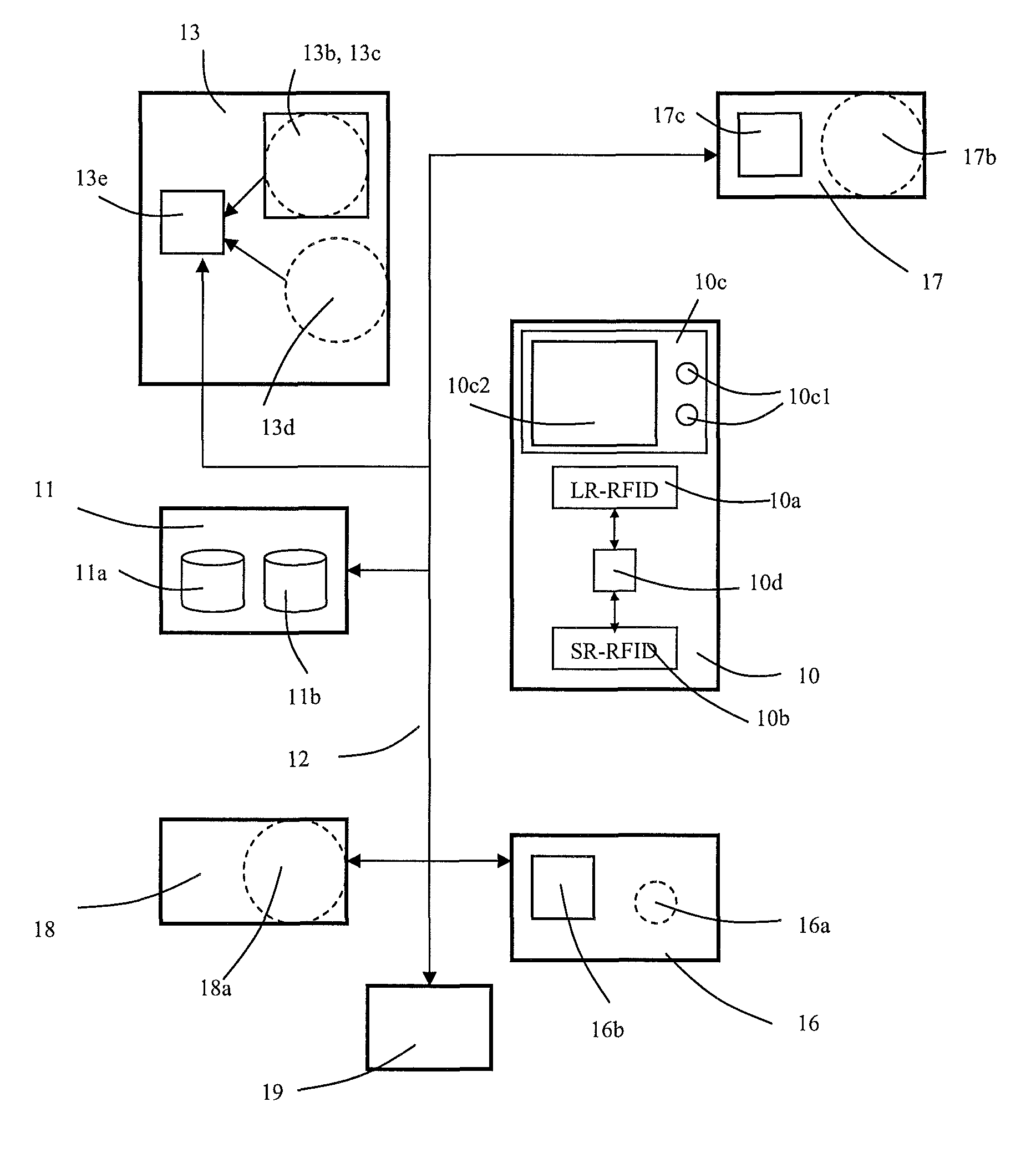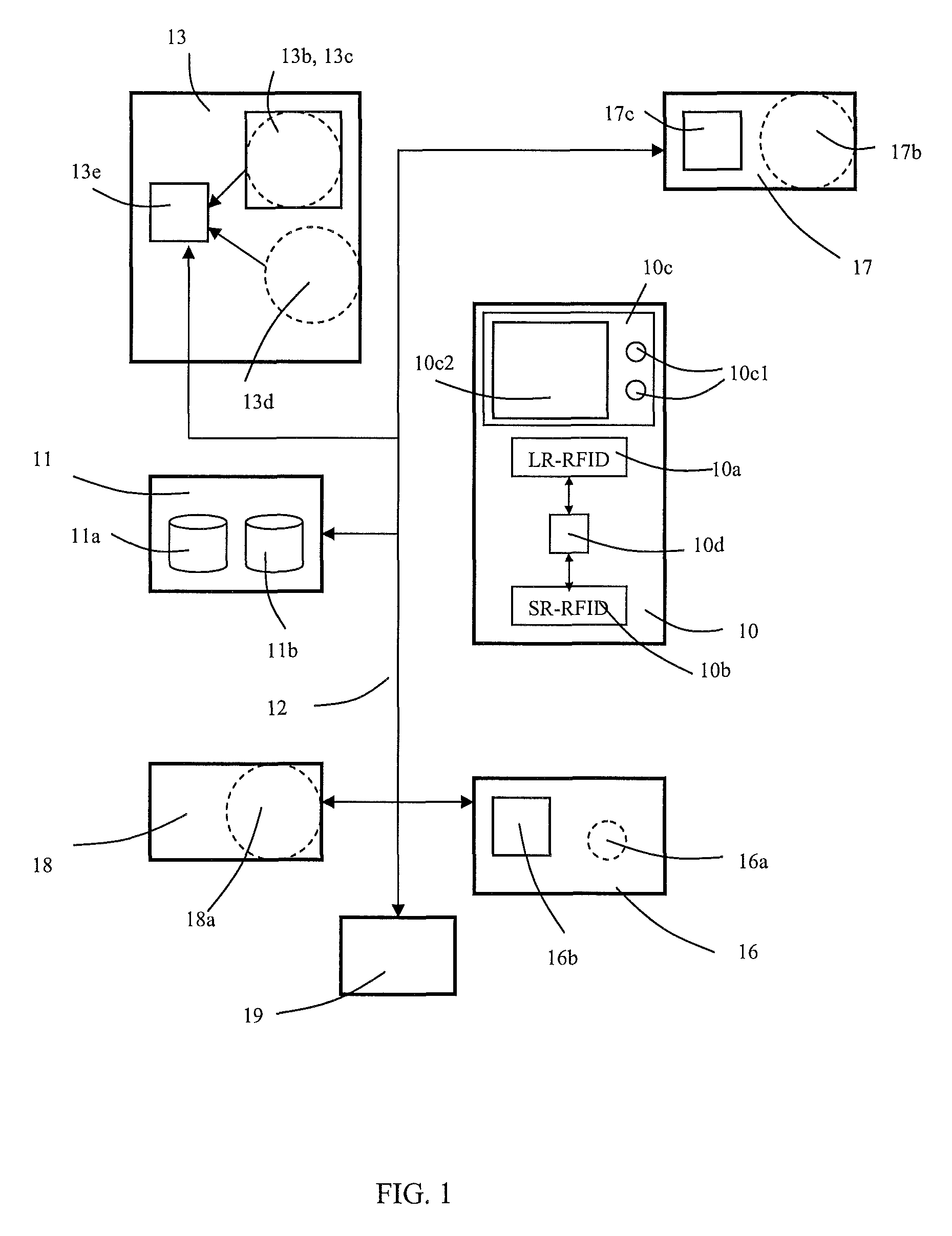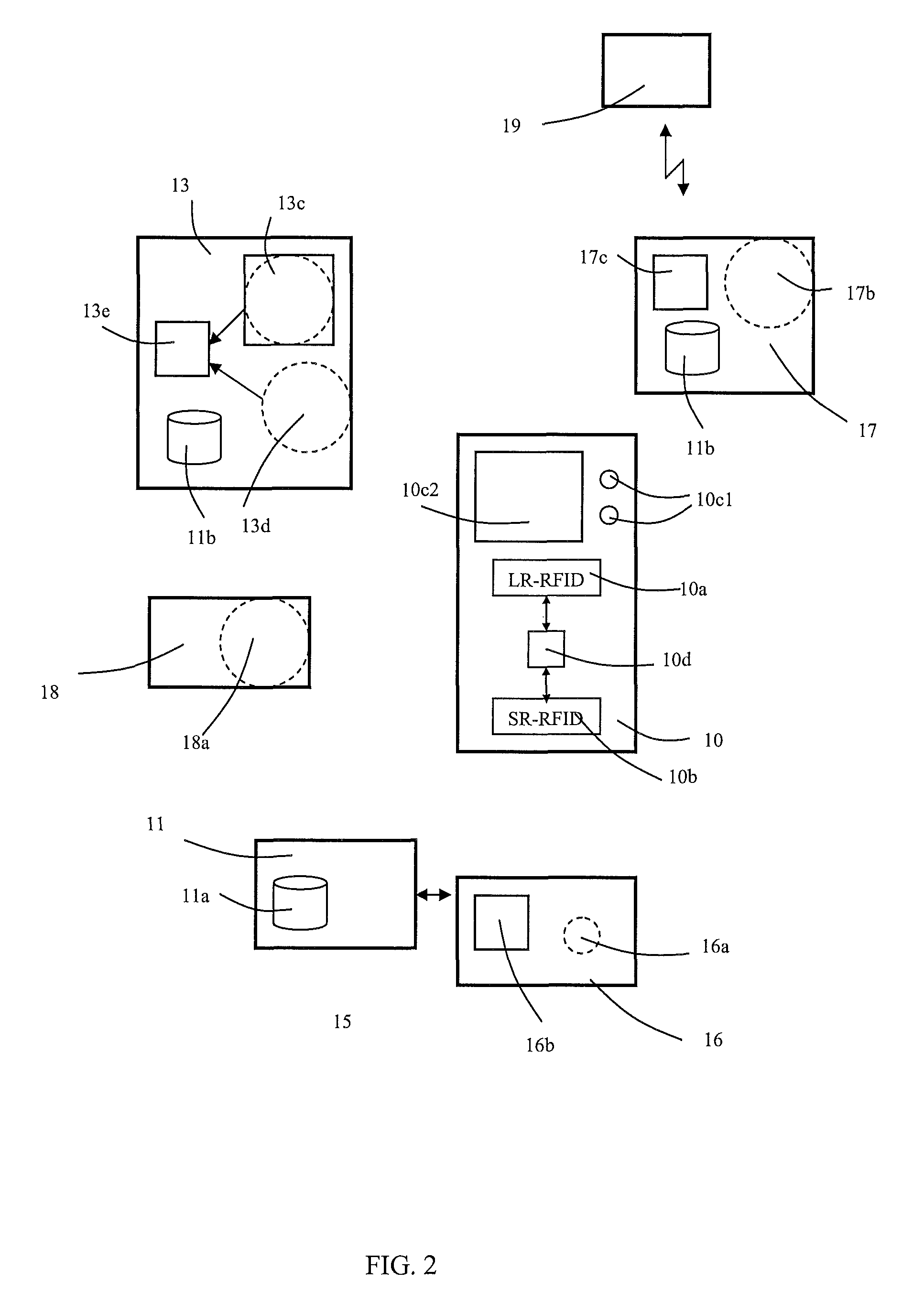Method and system for limiting access rights within a building
a technology for building access and control, applied in the field of access control, can solve the problems of affecting the service request, security risk, etc., and achieve the effect of simple access control system, easy maintenance, and simple elevator system
- Summary
- Abstract
- Description
- Claims
- Application Information
AI Technical Summary
Benefits of technology
Problems solved by technology
Method used
Image
Examples
Embodiment Construction
[0030]In the following the meaning of certain terms used in this application is explained in more detail:[0031]identification point: the term refers both to a short-range identification point and to a long-range identification point.[0032]access right: an access right determines the space or area in a building to which a passenger has a right of entry or it determines a service request which generates a conveying service made to a space or area in the building. A period of validity, within the scope of which an access right can be used, can be connected to an access right.
[0033]FIG. 1 illustrates a system according to the invention broken down into operating blocks. Operating block 10 presents a terminal device given into the possession of a passenger, into which device is integrated a long-range identifier 10a (LR-RFID), a short-range identifier 10b (SR-RFID), and also a user interface 10c, which comprises a display element 10c2 as well as selection pushbuttons 10c1. The identifier...
PUM
 Login to View More
Login to View More Abstract
Description
Claims
Application Information
 Login to View More
Login to View More - R&D
- Intellectual Property
- Life Sciences
- Materials
- Tech Scout
- Unparalleled Data Quality
- Higher Quality Content
- 60% Fewer Hallucinations
Browse by: Latest US Patents, China's latest patents, Technical Efficacy Thesaurus, Application Domain, Technology Topic, Popular Technical Reports.
© 2025 PatSnap. All rights reserved.Legal|Privacy policy|Modern Slavery Act Transparency Statement|Sitemap|About US| Contact US: help@patsnap.com



